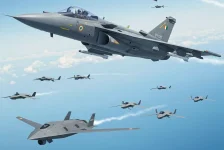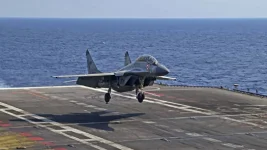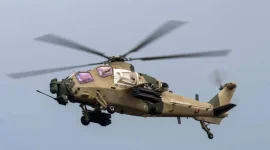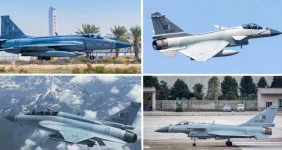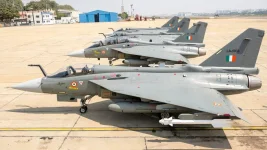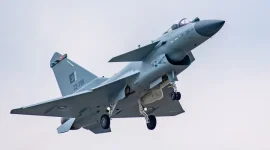- Views: 267
- Replies: 8
Recent reports circulating on Pakistani defence-focused YouTube channels suggest a significant development in Sino-Pakistani military relations. These sources claim that during a recent meeting in Beijing, Chinese Defence Minister Dong Jun assured Pakistan Air Force (PAF) Chief, Air Chief Marshal Zaheer Ahmad Babar, that Pakistan could potentially receive China's highly secretive sixth-generation fighter jets by the year 2030.
This purported assurance, if verified, would represent a major advancement in the defence collaboration between the two nations. The claims emerged alongside reports that Air Chief Marshal Babar's visit was also intended to finalize an agreement for Pakistan to acquire 40 Shenyang J-35A fifth-generation stealth fighters
While Pakistani media outlets have highlighted these developments as proof of China's accelerating aerospace capabilities, industry analysts urge caution, questioning the feasibility of producing such advanced aircraft within the suggested timeframe and noting the significant production challenges involved.
According to the Pakistani sources, Defence Minister Dong communicated China's willingness to supply the PAF with its next-generation fighter aircraft. Details about this platform remain scarce, although claims suggest two distinct prototypes – one fighter and one fighter-bomber configuration – may have achieved their first flights earlier in 2025. This timeline aligns with China's known ambitions to lead in next-generation aviation technology, potentially outpacing competitors like the United States and European consortiums.
However, the prospect of transitioning from alleged prototypes in 2025 to delivering operational aircraft to Pakistan by 2030 strikes many experts as overly optimistic, given the inherent complexities of maturing and mass-producing such cutting-edge technology in less than five years.
The PAF has previously shown interest in upgrading its fleet with advanced aircraft. Earlier reports indicated discussions surrounding the potential acquisition of the Shenyang J-35A, a fifth-generation stealth fighter prominently displayed at the 2024 Zhuhai Airshow.
Pakistani defence commentators now assert that Air Chief Marshal Babar's trip this week cemented a deal worth approximately $1.5 to $2 billion for 40 J-35A jets, with deliveries anticipated within the next two years. The J-35A, a twin-engine aircraft designed for multiple roles including air combat and ground strikes, is understood to still be in pre-mass production stages, currently being integrated into China's own People's Liberation Army Air Force (PLAAF).
If this deal proceeds, Pakistan would become the first international customer for the J-35A, significantly enhancing its air defence capabilities relative to regional neighbours, particularly India.
While fifth-generation fighters like China's J-20 and J-35A focus on stealth and advanced sensor integration, the defining features of sixth-generation aircraft are still largely conceptual worldwide. They are expected to incorporate technologies such as artificial intelligence for autonomous operations, potentially directed-energy weapons, and hypersonic flight capabilities – features still under development globally.
The sightings of two distinct Chinese prototypes, if accurate, might indicate testing of advanced airframe designs and propulsion systems, possibly using engines like the WS-19. Nevertheless, bridging the gap from initial flight tests to full-scale production and export delivery by 2030 presents a formidable challenge, even for established state-supported manufacturers like China's Shenyang Aircraft Corporation.
Commentators within Pakistan speculate that China's alleged offer of sixth-generation technology serves a strategic purpose: reinforcing Pakistan's position as a primary ally in South Asia and acting as a counterweight to India's military modernisation. The PAF, which currently operates aircraft including JF-17 Thunders, J-10Cs, and older F-16s, likely views the J-35A as a necessary near-term enhancement, while the prospect of a sixth-generation fighter represents a long-term strategic advantage.
Some Pakistani sources suggest this could allow the PAF to surpass the capabilities of the Indian Air Force's Rafale and Su-30MKI fleets by 2030, although such assessments often overlook India's own efforts, such as the indigenous fifth-generation Advanced Medium Combat Aircraft (AMCA) program, which aims for induction in the mid-2030s.
Significant skepticism remains regarding the feasibility of the reported 2030 timeline. Bringing the J-35A fighter into full-scale production for both domestic and export needs already represents a major industrial undertaking for China. Developing, testing, and mass-producing a far more complex sixth-generation aircraft, reliant on technologies yet to be fully proven, adds immense difficulty.
Furthermore, observers note that China's defence industry typically prioritises fulfilling the requirements of its own military (PLAAF) before allocating production capacity for export orders.
Pakistan's ongoing economic challenges, including reliance on international financial support and existing debt, also raise questions about its capacity to fund such large-scale acquisitions, leading analysts to suggest that any deal might involve substantial subsidies or favourable financing terms from Beijing to achieve broader geopolitical objectives.

